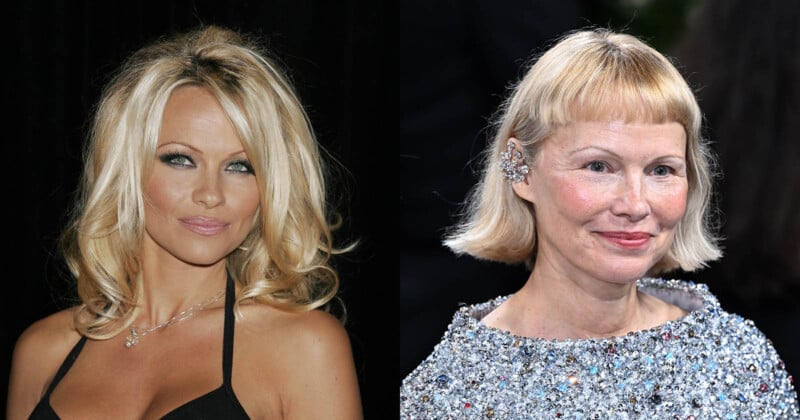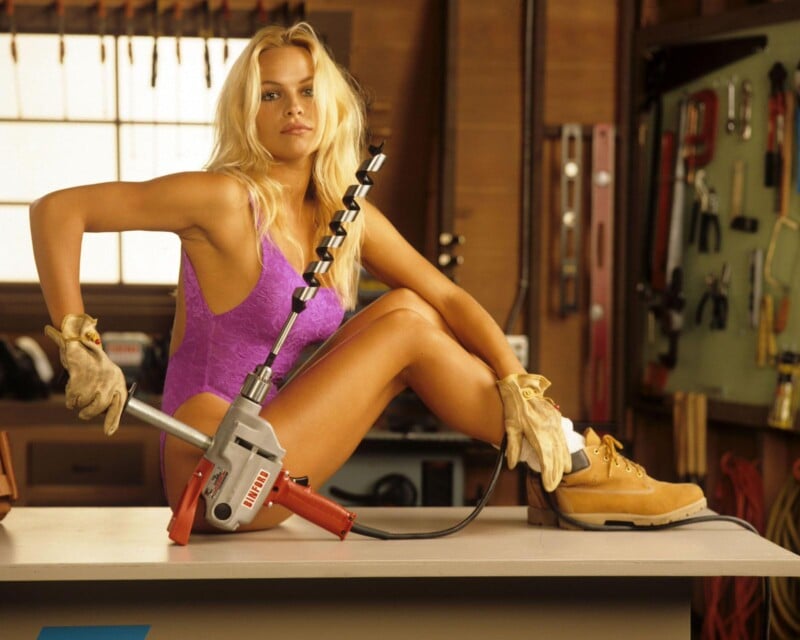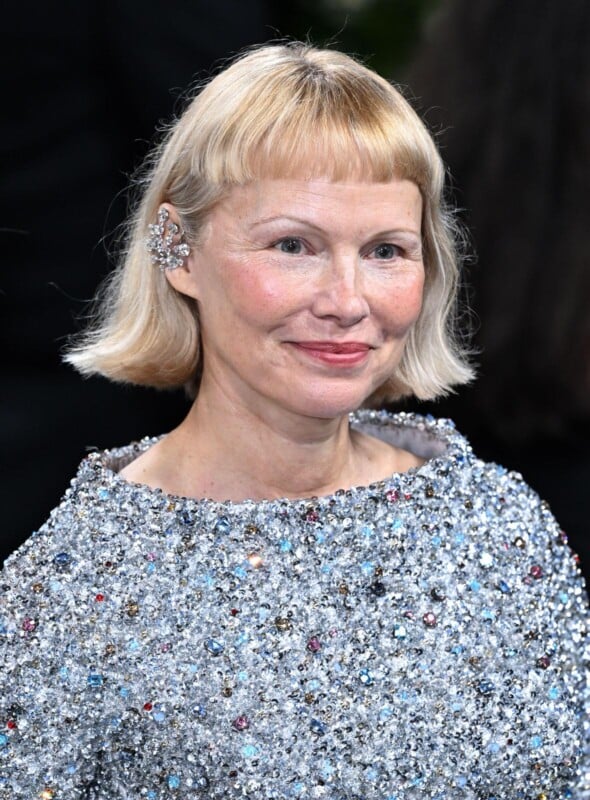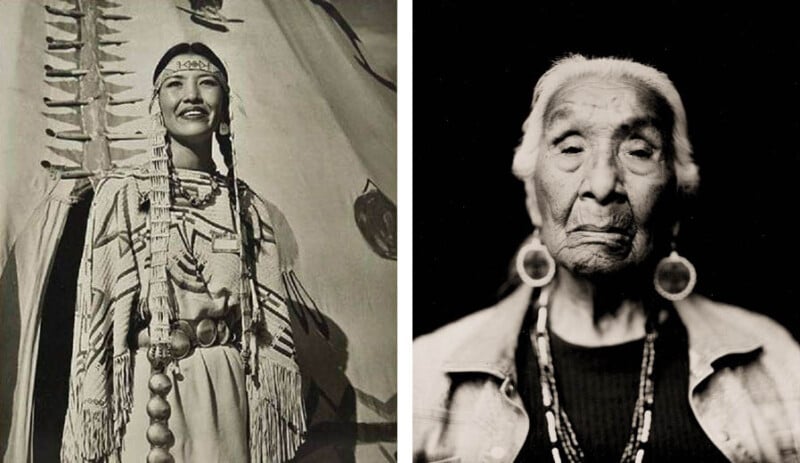Why is Pamela Anderson Not Allowed to Age?

We have all seen the online drama and hate that has been thrown at the recent photographs of Pamela Anderson, age 57. This Canadian-American actress, model, and media personality has been the center of attention for nearly four decades.
Let’s admit it, none of us know Pamela personally. So, we use video and mostly photographs to see her as she ages.

This article really is about the tale of photographs and the perceived acceptance or non-acceptance that women, like every human, age with time. How have we gotten here?




The lyrics from the song “True Sadness” by The Avett Brothers seems so very poignant:
Angela became a target
As soon as her beauty was seen
By young men who try to reduce her down
To a scene on an X-rated screen
Is she not more than the curve of her hips?
Is she not more than the shine on her lips?
Does she not dream to sing
And to live
And to dance down her own path
Without being torn apart?
Does she not have a heart?
Pamela recently starred in the acclaimed movie The Last Showgirl, directed by Gia Coppola, where she portraits an aging Las Vegas showgirl who becomes unemployed after she can no longer compete in her profession against younger women. Anderson received nominations for Best Actress at the 82nd Golden Globe Awards. Pamela has decided to put down the puff and plumage for something more real and honest.

In 2019, after Pamela’s longtime makeup artist Alexis Vogel passed away from breast cancer, Pamela told Elle why she abandoned her signature heavy makeup look: “I just felt, without Elexis, it’s just better for me not to wear makeup. I feel rooted for. I feel good. I’m in a good place.” She also expressed relief all the time she is saving not having to sit in a make-up chair.



Pamela on the sets of Home Improvement and Bay Watch and 34 years later at the Met Gala in 2025.
I suppose the real issues started with the invention of digital photography, cellphone cameras, and social media. At first, people were simply just using their Blackberry cellphones to share photos of themselves on social media. Then the Apple iPhone came along in 2007 and something sinister happened. The cell phones and the apps that ran on them started to include “filters” and things started to go sideways for us mortals. Suddenly people had an online persona and the images they were sharing looked nothing like them.
It was our need to “look our best” that led people to share altered images that were not grounded in reality. One could never predict this was only the beginning. Quickly more and more aging and anti-aging apps came along. We could feed the app a photo of ourselves, and it would show us what we looked like as a child (more often than not unsuccessfully) because we had something to compare it to. But then we humans thought it would be cool to see what we looked like when we were 80. Then digital avatars came along and we were all hiding behind digital cartoon representations. All of a sudden these fakes were taking the place of real photographs of ourselves. Our egos seemed satiated for a few moments.
Finally, Artificial intelligence (A.I.) image-making became all the rage and we found out that we could look however we wanted. We could completely divorce ourselves from who we really are and 99% of the people we encounter online would never run into us on the street, so they would never be the wiser about our true appearance. A.I. large language models (LLMs) can give us the “perfect” headshot and people are using non-photos of themselves on job applications, in brochures, on business cards, and on wedding invitations. All the while ignoring that the truth is important.
We have known for some time that this cannot be healthy for society. Young women and girls are particularly vulnerable to these visual technologies. The National Institute of Health has found that photo editing on social media has a significant impact on self-esteem. Never before have humans had the ability to compare their physical appearance to millions of others at these rates. This problem is even worse when people compare their real bodies to unrealistic shapes and sizes created by these photo editing apps. As a result, rates of body dysmorphia and eating disorders, especially amongst the younger generation, have risen dramatically. This leads to ethical concerns for photo-editing software, as well as social media platforms that host these heavily edited images.
It comes as no surprise that breast implants came on the scene in 1961, followed by liposuction in 1974, then Botox in 1987. Plastic surgery has become a pandemic. We all have seen the latest obsession with lip fillers. Then there are the pharmacological dangers of using Fen-phen in the 1990s and now we are seeing the adverse side effects of Ozempic use for non-diabetic weight loss. “Ozempic Face” is a real condition. The demand is there, and the beauty industry always has the answer. The beauty industry worldwide is booming and is estimated to have reached $108.41 billion in 2024.
Before I became a photographer, I was an oncology nurse. I should also state that I am a father of three daughters. I am acutely aware that these young bodies that we all inhabit cannot be maintained. From the moment we are born, we are slowly moving towards our inevitable end.
“We are all slowly aging out,” as my good friend Victory Tischer-Blue told me when I was writing this article. Victory is the former bass player with the 1970s teenage all-girl band The Runaways and she knows intimately how society treats aging beauty. It is the nature of things, and we all have the disease called mortality. No matter how often we exercise, how healthy we eat, and whether we avoid smoking and drinking the result is always the same. We can only hold off the grey hairs, sagging skin, and wrinkles for so long. Age will catch us all and nobody is impervious, even for the likes of an extremely popular model who was desired by every man and envied by every woman.
So why are we so hard on Pamela Anderson and other “pretty women” like Julia Roberts, Madonna, Nicole Kidman, and Goldie Hawn? The list goes on and on.
What is really evident is that there is some double standard for women that does not apply to men. Richard Gere, Sean Connery, George Clooney, and Brad Pitt are just some of the leading men who are “aging gracefully” while their female counterparts are ripped to shreds for showing any signs of getting older.



When I was reviewing some of the comments made on Facebook about Pamela and her Gala photos something quickly stood out. It appeared that a vast majority of the comments being made were by women, not men. How can that be possible and why? So I decided to do a quick survey of a popular thread. Entertainment Tonight did a Facebook post on May 5th about the photos of Pamela at the Gala. At the time I was writing this, the post had 33,200 comments with 2900 shares.
I painstakingly looked for the first 100 negative comments people made about her looks, her outfit, or her make-up. It was surprising that 88 of the 100 negative comments were made by women. This exercise took me a couple of hours and by no means a scientific survey, but the results are glaring. By the end of this sampling, I was nauseated by what I was reading. It needs to be said that a vast majority of the comments were positive and in support of Pamela and her journey. As usual, it seems that the ugliness and negative comments get more attention than the accolades. The algorithms embedded in social media platforms boost negative controversy over everything else.
There needs to be some reason for the vitriol being thrown at her. One reason may be that none of us want to admit that we are all getting older. Entropy never stops and these mortal bodies made of skin and bones are slowly falling apart. Another reason may be that women are envious of the life that Pamela has and the attention she garnered earlier in her life because of her innate beauty. Attention from men may justify poking fun at someone else’s aging appearance, particularly from people of the same sex.
Remember: women and men both compete for sexual partners. In my research from the social media post, more than one woman said “And to think men once lusted after her”. Psychology Today tells us that “envy is the personal pain caused by the desire for the advantages of others. Envy is deeply ingrained in the human psyche and common to all times and people.”
So why do men also have an issue with someone aging whose pin-up poster was on their wall as a young man? Men seem to put beautiful women on a pedestal and have thoughts and desires about the perfect woman. Seeing Pamela age right in front of their eyes is a reminder that nobody is perfect forever and that may remind them of their own mortality and imperfections.
Dr. Cynthia Chen from the National University of Singapore states, “Aging societies reinforce the prevailing gender norms in which men continue to be allocated the majority of opportunities, resources, and social support.” This tells us that women are at a disadvantage as they age. In a perfect world, Pamela should be supported and celebrated as a woman.
Here are examples of recent online comments of the people reacting to Pamela Anderson’s Met Gala photographs demonstrating the online hypocrisy and double standards that women face online today:
“Why are people blowing smoke up her a**? Clearly she looks like s**t, you people have got to stop lying.”
“She looks horrible.”
“Just hell no.”
“She looks like a sea hag!”
Just because Pamela has been blessed in her position in life, does not mean her looks should be judged so harshly. I get it: we are in a world where beauty and perfection are rewarded. Understanding and allowing people to age gracefully should be the status quo. It is hypocritical to admire a celebrity in their youth and then only to abandon them as they age. Society can do better, and we should all raise awareness of this issue. The mental well-being and self-esteem of the next generation rely on us.
As a photographer, I have been asked many times to “make me look thinner” or “can you edit out my wrinkles”. Anyone who takes portraits has seen this same behavior repeatedly. I always tell my sitters that they have “earned those wrinkles” and how fortunate we are to be able to age, some people never get that opportunity.
I recently had the honor of photographing Mary Louise Defender Wilson a 94-year-old Native American elder. I came across her portrait from 1954 when she was Miss Indian America. Here is that early portrait next to my recent wet plate collodion photograph taken this month. My friend Mary is the perfect example of a woman aging gracefully with dignity.

It appears that society needs to become comfortable in their own skin. To accept that these beautiful bodies that we had in our youth will change over time. With this acceptance, maybe we can find a place in our hearts to be kinder to complete strangers. Ancient cultures honored the elderly, but that practice has seemed to fall out of favor in the modern world. Maybe we can start to celebrate people as they age. Would that not be a positive change for humanity and society? I am not pretending to have a solution to these issues. All I can do is raise awareness and try to teach young people in my life the importance and honor of getting older. Society needs to realize that beauty can be embodied at any age.
About the author: Shane Balkowitsch is a wet plate collodion photographer. He has been practicing for over a decade the historic process given to the world by Frederick Scott Archer in 1851. He does not own a digital camera and analog is all that he knows. He has original plates at 102 museums around the globe including the Smithsonian, Library of Congress, The Pitt Rivers Museum at the University of Oxford, and the Royal Photographic Society in the United Kingdom. He is a professor of photography at Bismarck State College and teaches a bespoke course on wet plate collodion photography. He is constantly promoting the merits of analog photography to anyone who will listen. His life’s work is “Northern Plains Native Americans: A Modern Wet Plate Perspective” a journey to capture 1,000 Native Americans in the present day in the historic process. You can find him on Instagram @balkowitsch. Shane is a frequent contributor to PetaPixel.